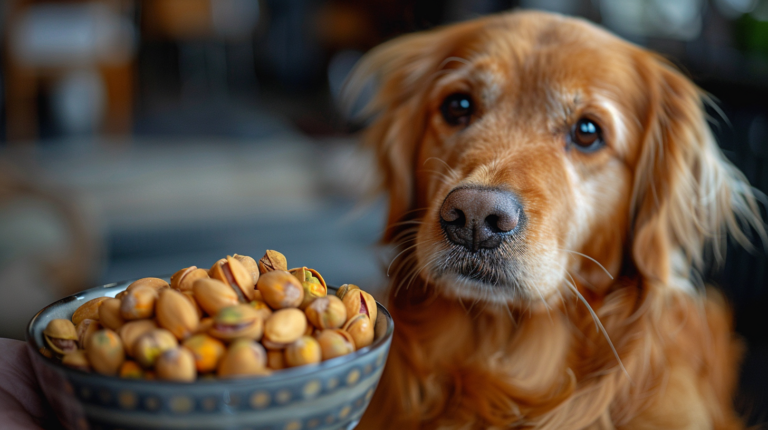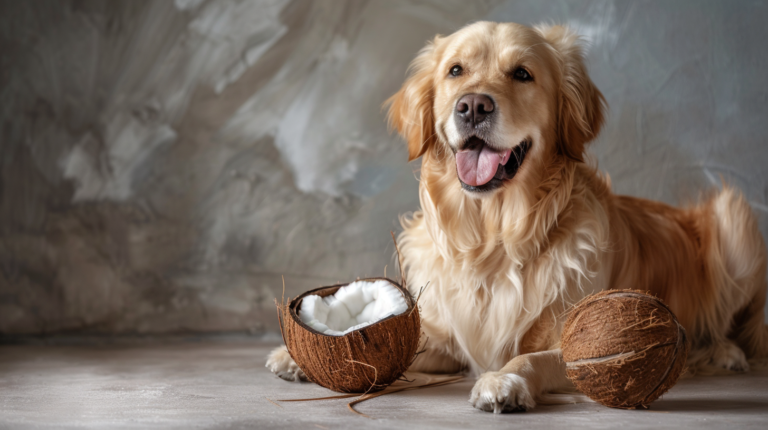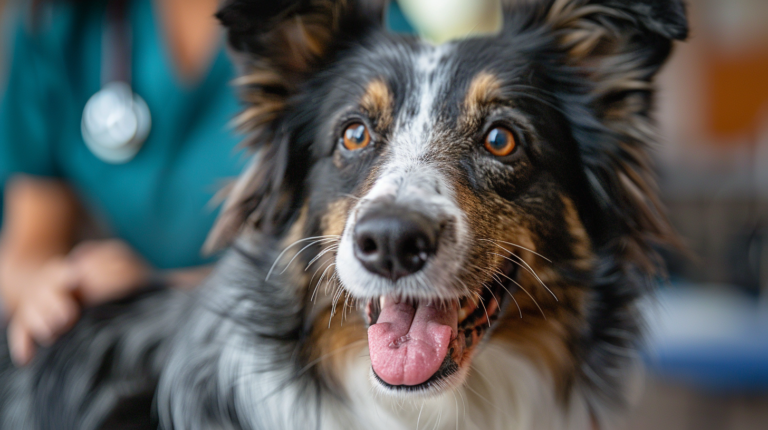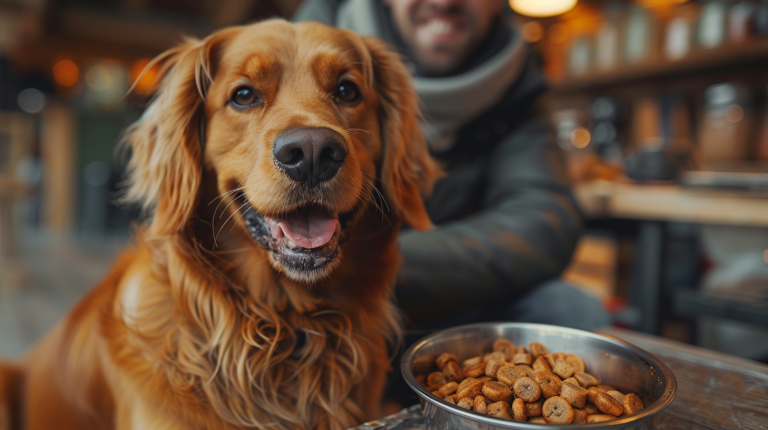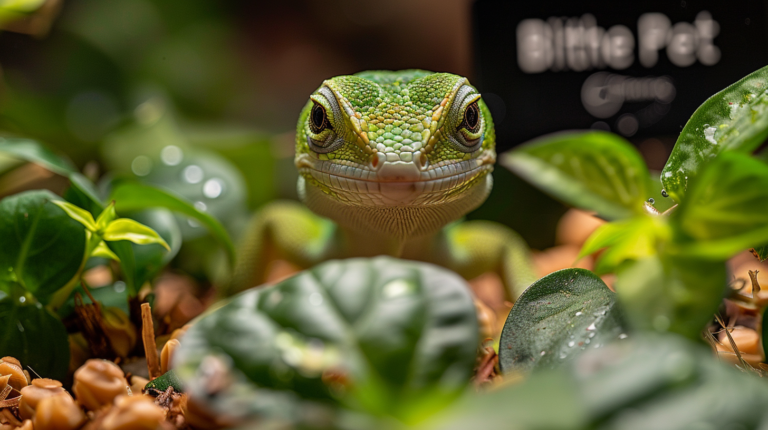Concerned about overfeeding pets? Learn to recognize 7 crucial signs of pet obesity, understand health risks, and discover expert strategies for healthy weight management.
Table of Contents
Are you showing love to your furry companion through their food bowl? While we all want to make our pets happy, overfeeding pets can lead to serious health consequences. In fact, according to the Association for Pet Obesity Prevention, approximately 59% of dogs and 61% of cats in the United States are classified as overweight or obese. This growing epidemic is reducing our beloved pets’ quality of life and shortening their lifespans.
As responsible pet parents, recognizing the signs of overfeeding is the first step toward helping our companions live longer, healthier lives. This comprehensive guide will walk you through the telltale indicators that you might be overfeeding your pet, provide practical solutions, and offer expert advice on establishing healthy feeding habits.
Understanding Pet Obesity and Its Causes
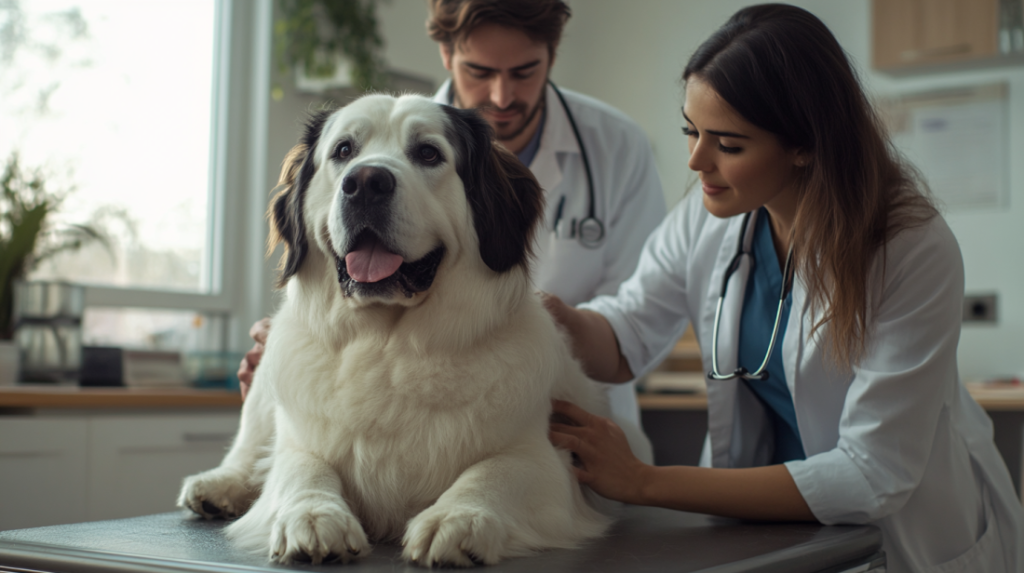
Pet obesity is defined as an accumulation of excessive body fat that negatively impacts a pet’s health and quality of life. Before we dive into the signs of overfeeding, it’s important to understand the common causes of pet obesity:
Common Causes of Overfeeding
- Misinterpreting Feeding Guidelines: Pet food packaging provides general guidelines, but these don’t account for individual pet differences like metabolism, activity level, and breed.
- Free-Feeding: Leaving food available at all times can lead to overeating in many pets.
- Emotional Feeding: Using food as love or to alleviate pet owner guilt.
- Inadequate Exercise: Consuming more calories than being burned through activity.
- Table Scraps and Too Many Treats: These extra calories add up quickly.
- Misunderstanding Healthy Weight: Many pet owners can’t accurately identify what a healthy weight looks like for their pet.
Dr. Sarah Peterson, veterinary nutritionist at the University of California, notes: “Many pet owners don’t realize they’re overfeeding their pets. They equate food with love and don’t recognize the signs of unhealthy weight gain until health problems develop.”
Now let’s explore the seven most common signs that you might be overfeeding your pet.
Sign #1: Visible Weight Gain and Body Shape Changes
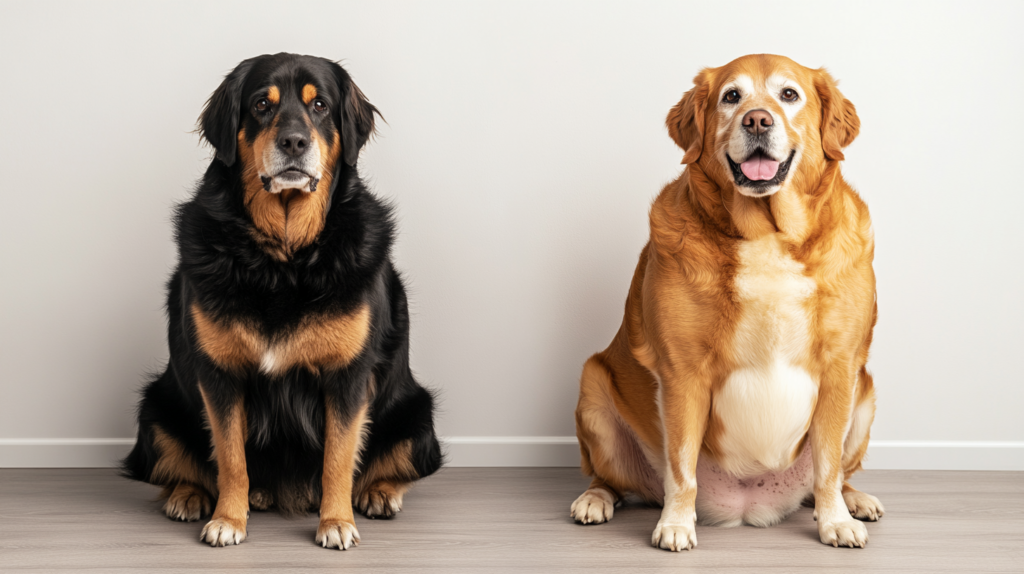
The most obvious sign of overfeeding pets is visible weight gain. However, because we see our pets daily, these changes can be subtle and easy to miss.
How to Identify Weight Gain:
- Compare photos: Look at pictures of your pet from 6-12 months ago and compare them to their current appearance.
- Difficulty standing up or moving: If your pet struggles with mobility, weight could be a factor.
- Rounded appearance: A barrel-shaped torso or bulging sides can indicate excess weight.
- Loss of visible contours: Healthy pets have a distinct waist when viewed from above.

According to a 2023 study published in the Journal of Veterinary Medicine, pets who maintain a healthy weight live an average of 2.5 years longer than overweight pets. This statistic alone highlights the importance of monitoring your pet’s weight.
Weight Gain Monitoring Tool:
| Species | Healthy Weight Signs | Overweight Signs | Obese Signs |
| Dogs | Visible waist, ribs easily felt | No visible waist, ribs difficult to feel | Distended abdomen, ribs cannot be felt |
| Cats | Visible waist from above, minimal abdominal fat | No visible waist, moderate fat pad | Distended abdomen, large abdominal fat pad |
| Small Pets (Rabbits, Guinea Pigs) | Smooth body contour, can feel spine | Rounded appearance, difficulty feeling spine | No definition between body parts, cannot feel spine |
Sign #2: Difficulty Feeling Ribs and Visible Waistline
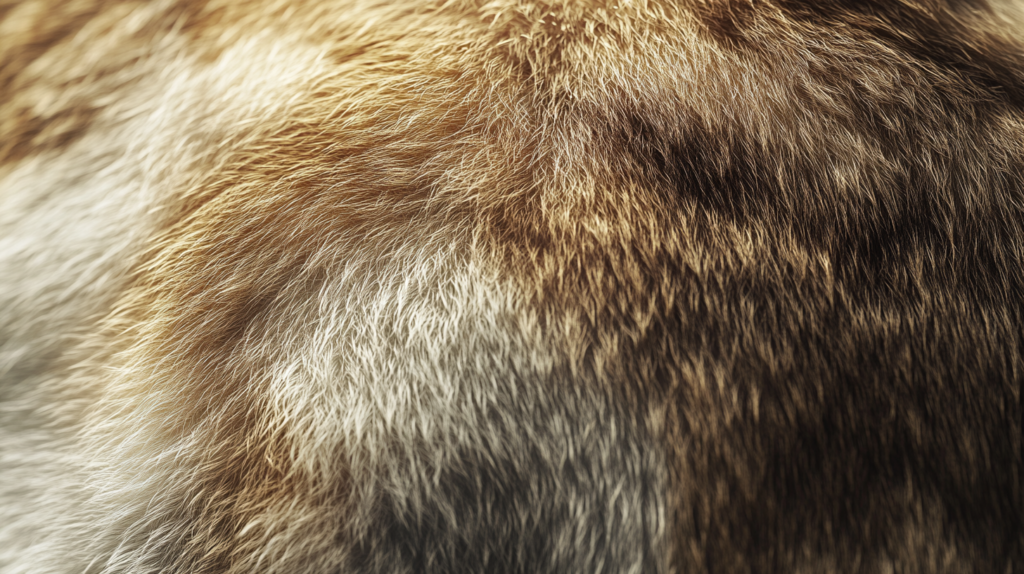
A hands-on assessment can provide valuable insights into whether you’re overfeeding pets. For most pets, you should be able to feel their ribs without having to press hard, and they should have a visible waistline.
The Rib Test:
- Place your thumbs on your pet’s spine and spread your hands across the rib cage.
- With gentle pressure, you should be able to feel the ribs.
- The sensation should be similar to feeling the back of your hand, where your knuckles are covered with a thin layer of flesh.
The Waistline Check:
- Standing above your pet, look down at their body.
- There should be a visible narrowing between the ribs and hips – this is the waist.
- From a side view, the abdomen should tuck up from the ribcage to the hind legs.
Dr. James Collins, DVM, explains: “If you can’t feel your pet’s ribs without pressing firmly or see a defined waistline, your pet is likely overweight. This is one of the most reliable indicators of overfeeding.”
Body Condition Score (BCS):
Veterinarians use a 9-point Body Condition Score system to assess pet weight:
- 1-3: Underweight
- 4-5: Ideal weight
- 6-9: Overweight to obese
Research from the Ontario Veterinary College found that 75% of pet owners underestimated their pet’s BCS, highlighting how our perception of “normal” weight can be skewed.
Sign #3: Decreased Energy and Activity Levels
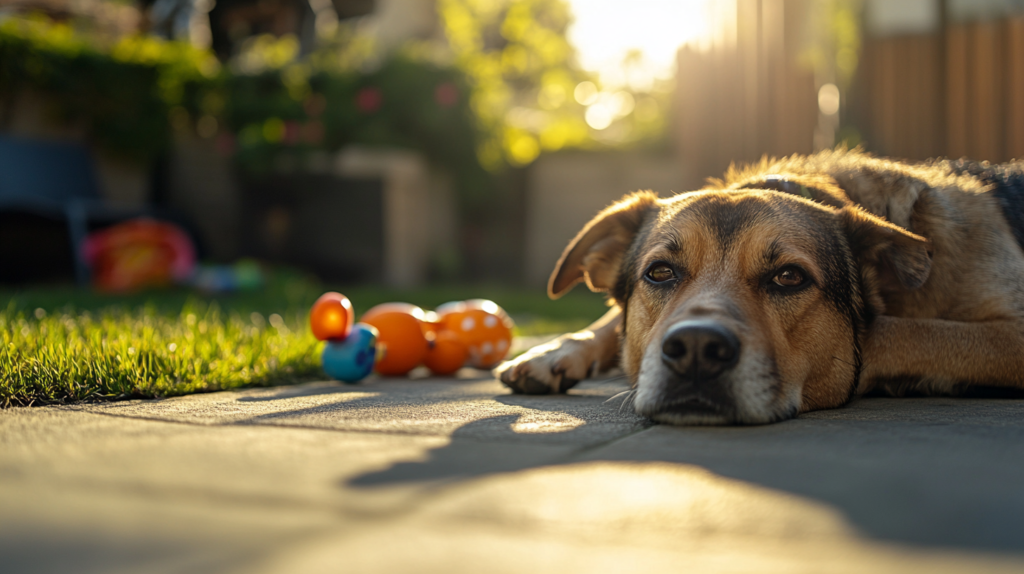
A noticeable reduction in your pet’s energy and willingness to play or exercise can indicate that they’re carrying excess weight due to overfeeding pets.
Activity Level Warning Signs:
- Reluctance to play: Declining interest in activities they previously enjoyed
- Shortness of breath: Panting excessively after minimal activity
- Decreased stamina: Tiring more quickly during walks or play sessions
- Difficulty jumping: Struggling to jump onto furniture or into vehicles
- Sleeping more than usual: Excessive lethargy throughout the day
The relationship between weight and activity forms a vicious cycle: overfeeding leads to weight gain, which reduces activity levels, which in turn leads to more weight gain. Breaking this cycle requires both dietary adjustments and gradually increasing exercise.
A 2024 study from the American Animal Hospital Association found that overweight dogs spent an average of 25% less time engaged in physical activity compared to their healthy-weight counterparts.
Tailored Exercise Recommendations by Weight Status:
For slightly overweight pets:
- Begin with regular short walks, gradually increasing duration
- Interactive play sessions 2-3 times daily
- Swimming (especially good for joint issues)
For moderately to severely overweight pets:
- Consult with veterinarian before starting exercise regimen
- Begin with very short, gentle walks
- Water therapy under professional guidance
- Passive range-of-motion exercises
Dr. Elena Rodriguez, canine fitness specialist, advises: “When helping an overweight pet become more active, gradual progression is key. Start with just 5 minutes of additional activity per day and slowly build up as their fitness improves.”
Sign #4: Begging Behavior and Food Obsession
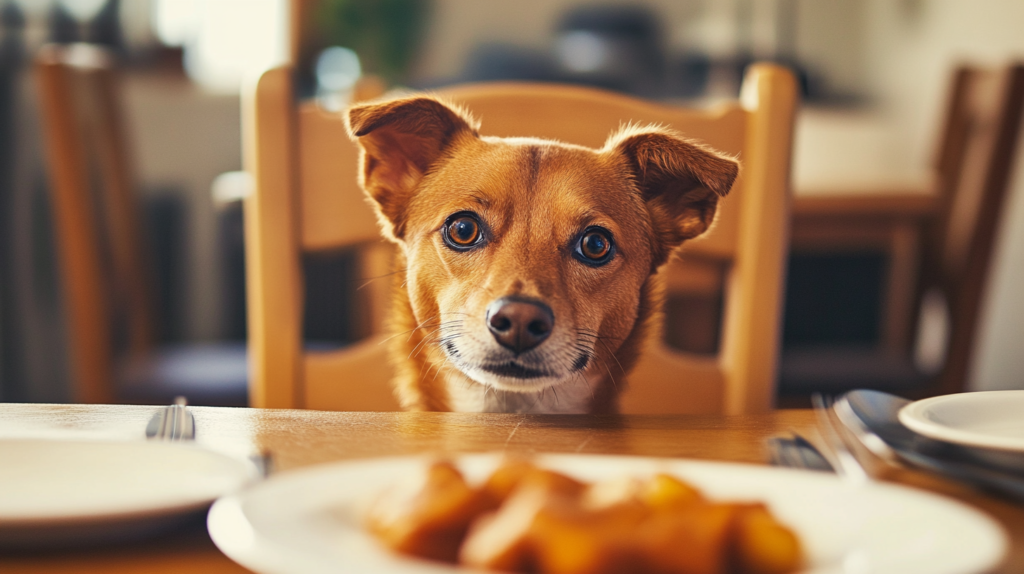
Constant begging for food doesn’t necessarily mean your pet is hungry—it could be a learned behavior resulting from overfeeding pets. Many pets will eat far beyond their caloric needs if given the opportunity.
Signs of Food Obsession:
- Persistent begging: Following you around, especially in the kitchen
- Excessive drooling when food is present
- Aggressive or possessive behavior around food
- Attempting to access food storage areas
- Stealing food from counters, tables, or other pets
A 2023 survey by the Pet Nutrition Alliance found that 68% of pet owners admit to giving in to begging behavior at least sometimes, with 31% doing so frequently.
Breaking the Begging Cycle:
- Consistent feeding schedule: Feed at the same times each day
- Remove food after mealtime: Don’t leave food out all day
- Redirect attention: When begging occurs, engage in play or training instead
- Use puzzle feeders: Slow down eating and provide mental stimulation
- Everyone follows the rules: Ensure all family members maintain consistent boundaries
Behaviorist Dr. Patricia McConnell notes: “Pets that appear obsessed with food have usually been inadvertently trained to be that way. When we give in to begging, we reinforce the behavior. But with consistency, this behavior can be modified.”
Sign #5: Digestive Issues and Irregular Bowel Movements

Overfeeding pets often leads to digestive problems that manifest as irregular bowel movements, gas, and other gastrointestinal issues.
Common Digestive Signs of Overfeeding:
- Increased stool volume or frequency
- Loose stools or diarrhea
- Excessive gas or flatulence
- Vomiting, especially after meals
- Visible discomfort after eating
According to the Veterinary Medical Database, approximately 25% of veterinary visits for gastrointestinal issues are related to improper feeding practices, including overfeeding.
Stool Quality Chart:
| Consistency | Appearance | Potential Indication |
| Very hard, dry | Small, crumbly pellets | Potential dehydration or constipation |
| Firm but malleable | Formed logs, minimal residue when picked up | Ideal stool consistency |
| Soft with shape | Maintains form but leaves residue | Mild dietary issue or mild overfeeding |
| Very soft or runny | No defined shape, difficult to pick up | Significant dietary issue, possible overfeeding |
Veterinary gastroenterologist Dr. Michael Schaer explains: “The digestive system has limits to what it can process efficiently. When we consistently exceed those limits through overfeeding, the result is often poor stool quality and discomfort for the pet.”
Monitoring Digestive Health:
Keep a food and stool diary for two weeks, noting:
- Type and amount of food given (including treats)
- Timing of meals
- Stool consistency and frequency
- Any digestive symptoms observed
This information can be invaluable when consulting with your veterinarian about potential overfeeding issues.
Sign #6: Treats Exceeding 10% of Daily Caloric Intake
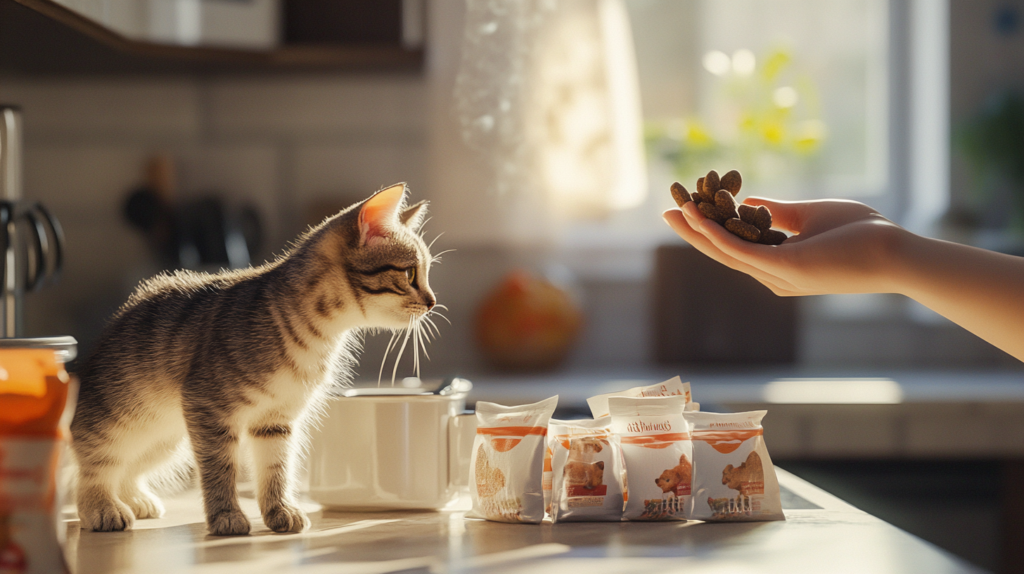
Many pet owners don’t realize how quickly treat calories add up. The general veterinary recommendation is that treats should make up no more than 10% of your pet’s daily caloric intake—exceeding this is a clear sign of overfeeding pets.
Calorie Content of Common Treats:
| Treat Type | Average Calories | Equivalent Human Food |
| Medium dog biscuit | 40-50 calories | One chocolate chip cookie |
| Rawhide chew (6-inch) | 85-100 calories | Two slices of bread |
| Pig ear | 120-150 calories | One hamburger patty |
| Dental chew | 60-90 calories | One scoop of ice cream |
| Small cat treat | 2-5 calories | One potato chip |
| Tablespoon of peanut butter | 95 calories | Two chocolate candies |
A study from the Journal of Animal Science found that when accounting for treats, 81% of dogs and 63% of cats consumed calories in excess of their daily requirements.
Healthier Treat Alternatives:
- Single-ingredient treats: Dehydrated meats with no additives
- Vegetables: Carrots, green beans, cucumber (for dogs)
- Frozen treats: Ice cubes made with low-sodium broth
- Commercial low-calorie treats: Specifically formulated to be lower in calories
- Non-food rewards: Play, attention, and praise can be more effective than food
Canine nutritionist Dr. Jennifer Adolphe recommends: “If you’re using treats for training, consider breaking them into tiny pieces. Your dog cares more about the frequency of rewards than the size, and you’ll reduce calorie intake dramatically.”
Treat Calculation Guide:
To determine how many treats fit within the 10% guideline:
- Calculate your pet’s daily caloric needs (your vet can help)
- Multiply by 0.10 to find the treat calorie limit
- Divide this number by the calories in your pet’s favorite treats
Example: A 30-pound adult dog needs approximately 700 calories daily. This means treats should not exceed 70 calories per day—equivalent to just one medium dental chew or two small biscuits.
Sign #7: Refusing Regular Food But Accepting Treats
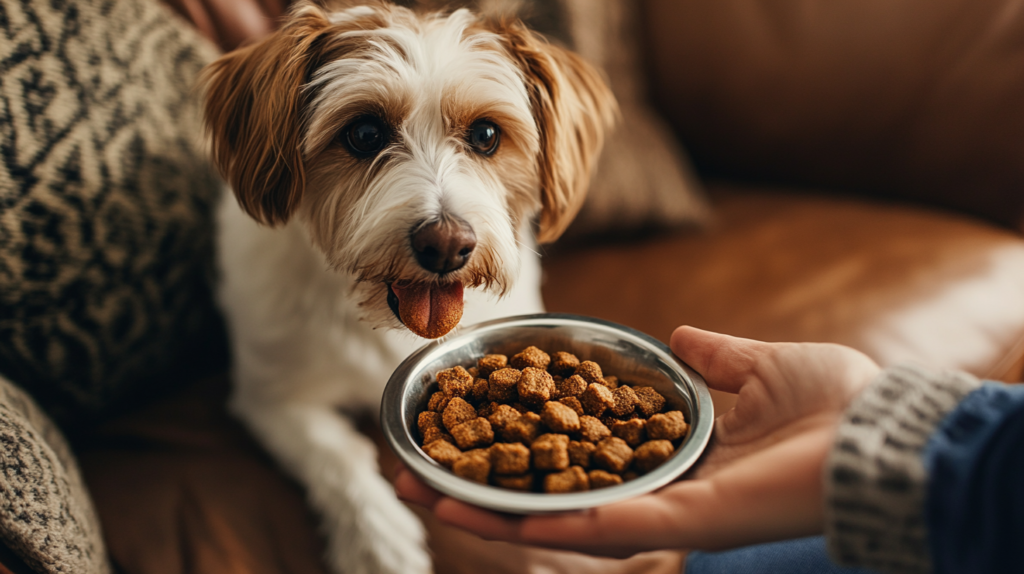
When pets become selective eaters—turning their noses up at regular meals while eagerly accepting treats—it’s often a sign of overfeeding pets or developing poor eating habits.
Why This Happens:
- Treat palatability: Commercial treats are designed to be highly appealing
- Learned behavior: Pets learn that refusing food may result in “better” options
- Full from treats: Already satisfied caloric needs through treats
- Meal irregularity: Inconsistent feeding schedules disrupting hunger cues
A 2024 survey published in the Journal of Veterinary Behavior found that 42% of pet owners who reported their pets were “picky eaters” were actually offering excessive treats throughout the day.
Correcting Selective Eating:
- Implement a strict feeding schedule: Offer food at consistent times
- Remove uneaten food: Pick up food after 20-30 minutes
- No treats between meals: Especially important when retraining eating habits
- Gradual transition: Slowly reduce treats while increasing meal compliance
- Stick to the plan: Healthy pets won’t starve themselves; consistency is key
Veterinary behaviorist Dr. Kelly Ballantyne notes: “What many owners interpret as pickiness is actually a learned behavior. Pets quickly figure out that refusing regular food often results in something better. The good news is that this behavior can be reset with consistent boundaries.”
The 15-Minute Rule:
- Place food down for 15 minutes
- If your pet doesn’t eat, remove the food
- Offer nothing else until the next scheduled meal
- Repeat consistently
Most pets will adjust to this schedule within a week, though some may take longer. If your pet goes more than 24 hours without eating, consult your veterinarian to rule out medical issues.
Health Risks Associated with Overfeeding
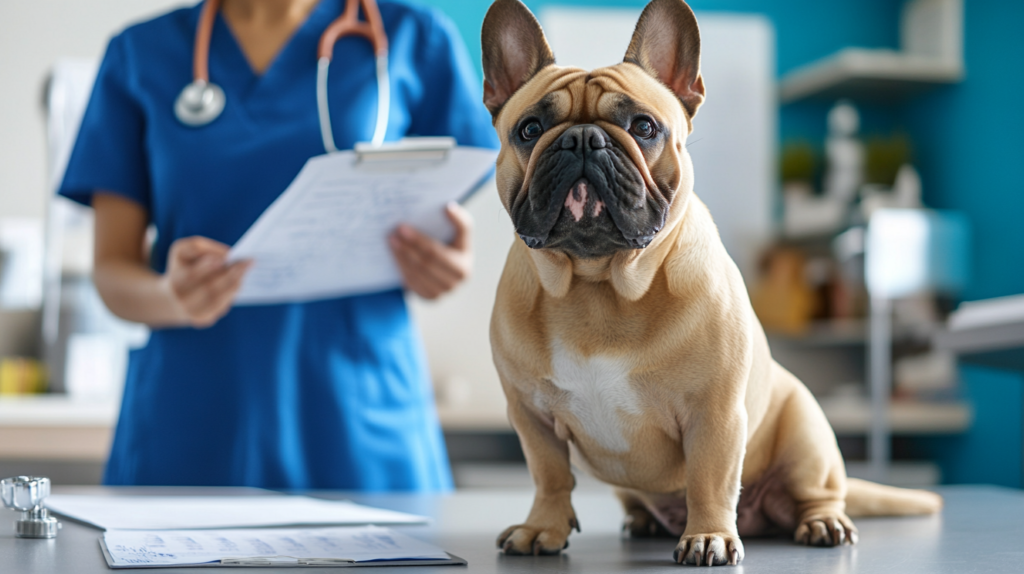
Overfeeding pets contributes to numerous serious health conditions that can reduce quality of life and shorten lifespan. Understanding these risks can provide motivation for establishing healthier feeding practices.
Major Health Risks:
Orthopedic Problems
- Joint stress: Extra weight puts pressure on joints
- Arthritis: Develops earlier and progresses faster
- Torn ligaments: Increased risk of CCL/ACL tears
- Intervertebral disc disease: Higher risk in overweight pets
Metabolic and Endocrine Diseases
- Diabetes mellitus: Dramatically increased risk, especially in cats
- Hepatic lipidosis: Fatty liver disease in cats
- Metabolic syndrome: Combination of insulin resistance, hypertension, and hyperlipidemia
Cardiovascular Issues
- Hypertension: High blood pressure
- Heart disease: Cardiac enlargement and congestive heart failure
- Reduced respiratory function: Difficulty breathing
Other Significant Concerns
- Decreased immune function: Poorer response to infection and disease
- Increased cancer risk: Several cancers are associated with obesity
- Reduced heat tolerance: Overweight pets overheat more easily
- Shorter lifespan: Studies show 2-2.5 years reduction in life expectancy
According to research published in the Journal of Veterinary Internal Medicine, obese dogs are at a 2.6 times higher risk of developing pancreatitis and overweight cats are 3.9 times more likely to develop diabetes compared to pets at ideal weight.
Economic Impact:
The financial burden of pet obesity is significant. A 2023 economic analysis by a major pet insurance provider found that owners of overweight pets spent an average of $1,480 more per year on veterinary care compared to owners of pets at healthy weights.
Dr. William Thompson, Chief Medical Officer at the American Veterinary Medical Association, states: “Pet obesity is one of the most preventable health crises we’re facing. The good news is that with proper diet, exercise, and weight management, many of these health risks can be significantly reduced or eliminated entirely.”
How to Establish Healthy Feeding Habits
Correcting overfeeding pets requires developing new routines and habits. Here’s a comprehensive approach to establishing healthier feeding practices:
Determining Appropriate Portions
- Consult your veterinarian: Get a professional assessment of your pet’s ideal weight and caloric needs
- Use a measuring cup: No more eyeballing portions
- Adjust for life stage: Puppies/kittens, adults, and seniors have different needs
- Consider activity level: Active pets need more calories than sedentary ones
- Account for all food sources: Include treats when calculating daily intake
Feeding Schedule Best Practices
- Consistent timing: Feed at the same times each day
- Meal frequency:
- Adult dogs: 1-2 meals daily
- Adult cats: 2-3 small meals daily
- Puppies/kittens: 3-4 meals daily
- Food removal: Pick up uneaten food after 20-30 minutes
- Separate multiple pets: Prevents food competition and stealing
Transitioning to Healthier Habits
- Gradual changes: Reduce portions by 10% initially, then adjust as needed
- Weight monitoring: Check weight every 2 weeks during transition
- Food transition: If changing diets, do so gradually over 7-10 days
- Treat substitution: Replace high-calorie treats with healthier alternatives
- Exercise integration: Implement appropriate activity alongside dietary changes
Food Selection Considerations
- Quality over quantity: Higher quality foods often have better nutrition profiles
- Food formulation: Consider weight management formulas if appropriate
- Wet vs. dry: Wet food generally has higher water content and can help with satiety
- Ingredient quality: Look for named meat sources and avoid fillers
- Prescription diets: Consider veterinary therapeutic diets for significant weight issues
Dr. Lisa Weeth, board-certified veterinary nutritionist, advises: “The best diet for weight management is one that your pet will eat consistently and that you can realistically maintain. Consistency is more important than finding the ‘perfect’ food.”
Weight Loss Timeline Expectations
| Species | Healthy Weight Loss Rate | Expected Timeline for 10% Loss |
| Dogs | 1-2% of body weight per week | 5-10 weeks |
| Cats | 0.5-2% of body weight per week | 5-20 weeks |
| Small Pets | 1-2% of body weight per week | 5-10 weeks |
Special Considerations for Different Life Stages
Overfeeding pets can occur at any age, but different life stages present unique challenges and considerations:
Puppies and Kittens
Young animals are growing rapidly and need more calories per pound than adults, but overfeeding can:
- Cause too-rapid growth leading to orthopedic problems
- Establish unhealthy eating patterns
- Set them up for obesity in adulthood
Feeding guidelines:
- Feed puppy/kitten-specific food until maturity
- Follow growth charts for expected weight gain
- Transition to adult food at appropriate time (varies by breed/size)
- Monitor body condition closely during growth spurts
Adult Pets
Middle-aged pets often experience:
- Decreasing metabolism
- Potential decline in activity levels
- Changing nutritional needs
Feeding guidelines:
- Adjust portions to maintain ideal body condition
- Reassess caloric needs annually
- Consider activity levels when determining portions
- Watch for middle-age spread and address quickly
Senior Pets
Older pets face unique challenges:
- Further metabolic slowdown
- Possible mobility issues limiting exercise
- Medication interactions with appetite
- Potential cognitive changes affecting eating habits
Feeding guidelines:
- Transition to senior-specific formula when appropriate
- More frequent weight checks (every 3-6 months)
- Adjust calories downward as activity decreases
- Consider joint-supporting nutrients
Spayed/Neutered Pets
Research shows that metabolism can decrease by 20-30% after spaying/neutering, making these pets particularly prone to weight gain.
Feeding guidelines:
- Reduce portions by approximately 20-30% following procedure
- Consider specialized “spayed/neutered” formulations
- Implement regular weigh-ins during the first year after surgery
- Be vigilant about maintaining activity levels
Veterinary endocrinologist Dr. Chen Wei explains: “The hormonal changes following spay/neuter surgery significantly impact metabolism. Without dietary adjustment, weight gain is almost inevitable. I recommend preemptively reducing portions within 30 days of surgery.”
Frequently Asked Questions About Pet Overfeeding
Is free-feeding (leaving food out all day) contributing to my pet’s weight problem?
Free-feeding works for some pets with excellent self-regulation, but for most, it leads to overfeeding and weight gain. Scheduled mealtimes help regulate hunger cues and allow for better monitoring of food intake. If your pet is overweight and you’re currently free-feeding, transitioning to scheduled meals is a recommended first step in weight management.
How do I know if my pet is actually hungry or just begging for attention?
True hunger typically occurs at regular intervals related to your feeding schedule. If your pet has eaten an appropriate portion within the last few hours, their begging is likely attention-seeking behavior rather than true hunger. Instead of food, offer attention in the form of play, grooming, or training. If your pet accepts these alternatives readily, they were likely seeking interaction rather than food.
My pet loses weight very slowly despite diet changes. What might be happening?
Several factors can slow weight loss, including:
- Insufficient calorie reduction
- Unaccounted treats or table scraps
- Metabolic conditions like hypothyroidism
- Insufficient exercise
- Inaccurate food measurement
If your pet is losing less than 0.5% of their body weight per week despite dietary changes, consult your veterinarian to rule out medical issues and reassess your weight management plan.
Can certain breeds or genetic factors make my pet more prone to weight gain?
Yes, genetic predisposition does play a role in pet obesity. Breeds particularly prone to weight gain include Labrador Retrievers, Beagles, Pugs, Bulldogs, and Dachshunds in dogs, and domestic shorthairs and Persian cats. Pets with these genetic tendencies require more vigilant monitoring and may need lower caloric intake than standard guidelines suggest.
Should I follow the feeding guidelines on the pet food package?
Pet food package guidelines are starting points based on average pets, not individualized recommendations. These guidelines often overestimate caloric needs for indoor, spayed/neutered, or less active pets. Use package recommendations as an initial reference, but adjust based on your pet’s body condition, weight trends, and veterinary guidance.
How can I make my pet feel satisfied while reducing portions?
To increase satiety while reducing calories:
- Add water or low-sodium broth to dry food
- Include high-fiber vegetables (for dogs) such as green beans or carrots
- Use food puzzles or slow feeders to extend meal time
- Divide daily portions into more frequent, smaller meals
- Consider high-fiber or weight management food formulations
For More Expert Pet Care Tips
For more expert pet care tips and product recommendations, visit BlithePet.com — your trusted source for pet wellness.
Conclusion: Taking Action Against Overfeeding
Overfeeding pets is a common problem with serious consequences, but it’s also one that can be addressed with knowledge and consistent action. By recognizing the signs of overfeeding, implementing appropriate portion control, establishing regular feeding schedules, and working closely with your veterinarian, you can help your pet achieve and maintain a healthy weight.
Remember that weight management is a journey, not a quick fix. Small, consistent changes will yield better results than drastic measures. The rewards—a longer, more active life for your pet—are well worth the effort.
Have a similar experience with your pet? Share it in the comments below!


